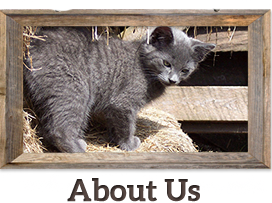Library
-
There are many different causes of colitis, so it is important to have a veterinary evaluation of any dog who experiences diarrhea, especially if it continues for multiple days or includes blood. The veterinary health care team must consider the role of diet in the cause and potential treatment for all cases of colitis.
-
The clinical signs of congestive heart failure (CHF) are seen in many dogs as they age. The two most common causes of CHF are chronic valvular disease and dilated cardiomyopathy. Hypertension (high blood pressure) may contribute to heart disease and CHF. Secondary medical conditions, such as obesity, low thyroid, or kidney disease may require dietary changes. Key nutritional goals are to maintain a stable body weight, deliver appropriate Calories, and feed a balanced diet that the dog will regularly eat.
-
Diabetes mellitus is a disease in which the body can no longer appropriately manage glucose for its energy requirements. Overweight and obese dogs are at greater risk of developing DM, so obesity prevention should be started early in puppyhood, with portion-controlled meal feeding. Once a dog has been diagnosed with DM, an owner must work closely with their veterinarian to choose insulin therapy and an appropriate diet to achieve stable blood glucose (good glycemic control).
-
Nutritional management can be an effective strategy in the treatment of liver disease when used in combination with appropriate medical therapy. Nutritional management of liver disease focuses on controlling the clinical signs of disease, as opposed to targeting the underlying cause.
-
Over 60% of cats in North America are either overweight or obese, so paying attention to the balance between activity and calorie intake is important. Nutrient formulation and portion control are the two most important aspects of weight control. Once you have chosen a formula and have calculated a reasonable daily portion based on calorie density, the best way to stay on track and prevent unwanted weight gain is to combine portion control with regular, formal weigh-ins.
-
Over 60% of dogs in North America are either overweight or obese, so paying attention to the balance between activity and calorie intake is important. Nutrient formulation and portion control are the two most important aspects of weight control. Once you have chosen a formula and have calculated a reasonable daily portion based on calorie density, the best way to stay on track and prevent unwanted weight gain is to combine portion control with regular, formal weigh-ins.
-
Working and service dogs come in many forms; as such, their nutritional needs vary widely. All diets should be complete, balanced, and life-stage appropriate, with consideration towards energy density and maintenance of ideal body condition. This article reviews these nutritional considerations and provides clinically relevant tools for the dog handler and the veterinary care team.
-
This handout discusses the risks and benefits of feeding commercially prepared fresh, whole-food diets, as well as home-prepared recipes for your cat or dog. Topics highlighted include food safety, nutritional imbalances, and the need to ensure that any diet has been well-researched for nutritional safety and completeness.
-
Feeding your cat the appropriate amount of a well-balanced diet is vital to their overall health and well-being. Each cat has unique nutrition needs, dependent on individual preferences and activity levels. In addition, nutritional requirements and dietary preferences change over the course of the cat's lifetime.
-
Feeding your dog the appropriate amount of a well-balanced diet is vital to their overall health and well-being. Each dog has unique nutrition needs, dependent on individual preferences and activity levels. In addition, nutritional requirements and dietary preferences change over the course of the dog's lifetime.


